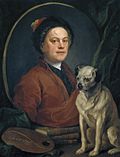List of works
| Image | Artist | Title | Date | Current collection | Acc. no. |
|---|---|---|---|---|---|
 | Sebastiano del Piombo | The Raising of Lazarus | 1517–1519 | National Gallery | NG1 |
 | Claude Lorrain | Landscape with Cephalus and Procris reunited by Diana | 1645 | National Gallery | NG2 |
 | Possibly by Titian | The Music Lesson | c. 1535 | National Gallery | NG3 |
 | Claude Lorrain | A Seaport | 1644 | National Gallery | NG5 |
 | After Correggio | Group of Heads | before 1587 | National Gallery | NG7 |
 | Claude Lorrain | The Mill (or Landscape with the Marriage of Isaac and Rebecca ) | 1648 | National Gallery | NG12 |
 | Claude Lorrain | Seaport with the Embarkation of the Queen of Sheba | 1648 | National Gallery | NG14 |
 | Circle of Annibale Carracci | Saint John the Baptist seated in the Wilderness | early 17th century | National Gallery | NG25 |
 | Raphael | Portrait of Pope Julius II | 1511 | National Gallery | NG27 |
 | Ludovico Carracci | Susannah and the Elders | 1616 | National Gallery | NG28 |
 | Claude Lorrain | Seaport with the Embarkation of Saint Ursula | 1641 | National Gallery | NG30 |
 | Gaspard Dughet | Landscape with Abraham and Isaac | c. 1665 | National Gallery | NG31 |
 | Damiano Mazza | The Rape of Ganymede | c. 1575 | National Gallery | NG32 |
 | Workshop of Titian | Venus and Adonis | c. 1554 | National Gallery | NG34 |
 | Gaspard Dughet | Landscape with a Storm | c. 1660 | National Gallery | NG36 |
 | After Correggio | Group of Heads | before 1587 | National Gallery | NG37 |
 | Peter Paul Rubens | The Rape of the Sabine Women | probably 1635–1640 | National Gallery | NG38 |
 | Nicolas Poussin | The Triumph of Silenus | c. 1636 | National Gallery | NG42 |
 | Rembrandt | The Woman Taken in Adultery | 1644 | National Gallery | NG45 |
 | Pupil of Rembrandt | The Adoration of the Shepherds | 1646 | National Gallery | NG47 |
 | Anthony van Dyck | Portrait of George Gage with Two Attendants | probably 1622–1623 | National Gallery | NG49 |
 | Anthony van Dyck | Saint Ambrose barring Theodosius from Milan Cathedral | c. 1619–1620 | National Gallery | NG50 |
 | Anthony van Dyck | Portrait of Cornelis van der Geest | c. 1620 | National Gallery | NG52 |
 | Aelbert Cuyp | A Hilly Landscape with Figures | c. 1655–1660 | National Gallery | NG53 |
 | Workshop of Peter Paul Rubens | The Holy Family with Saints in a Landscape | after 1635 | National Gallery | NG67 |
 | After Correggio | The Agony in the Garden | probably c. 1640–1750 | National Gallery | NG76 |
 | Circle of Annibale Carracci | Erminia takes Refuge with the Shepherds | early 17th century | National Gallery | NG88 |
 | Justus Sustermans | Double Portrait of the Grand Duke Ferdinand II of Tuscany and his Wife Vittoria della Rovere | probably 1660s | National Gallery | NG89 |
 | Annibale Carracci | Marsyas and Olympus | 1597–1600 | National Gallery | NG94 |
 | Joshua Reynolds | Portrait of Lord Heathfield with the keys of Gibraltar | 1787 | National Gallery | NG111 |
 | William Hogarth | The Painter and his Pug | 1745 | Tate | N00112 |
 | William Hogarth | Marriage A-la-Mode: 1. The Marriage Settlement | c. 1743 | National Gallery | NG113 |
 | William Hogarth | Marriage A-la-Mode: 2. The Tête à Tête | c. 1743 | National Gallery | NG114 |
 | William Hogarth | Marriage A-la-Mode: 3. The Inspection | c. 1743 | National Gallery | NG115 |
 | William Hogarth | Marriage A-la-Mode: 4. The Toilette | c. 1743 | National Gallery | NG116 |
 | William Hogarth | Marriage A-la-Mode: 5. The Bagnio | c. 1743 | National Gallery | NG117 |
 | William Hogarth | Marriage A-la-Mode: 6. The Lady's Death | c. 1743 | National Gallery | NG118 |
 | David Wilkie | The Village Holiday | 1809–1811 | Tate | N00122 |